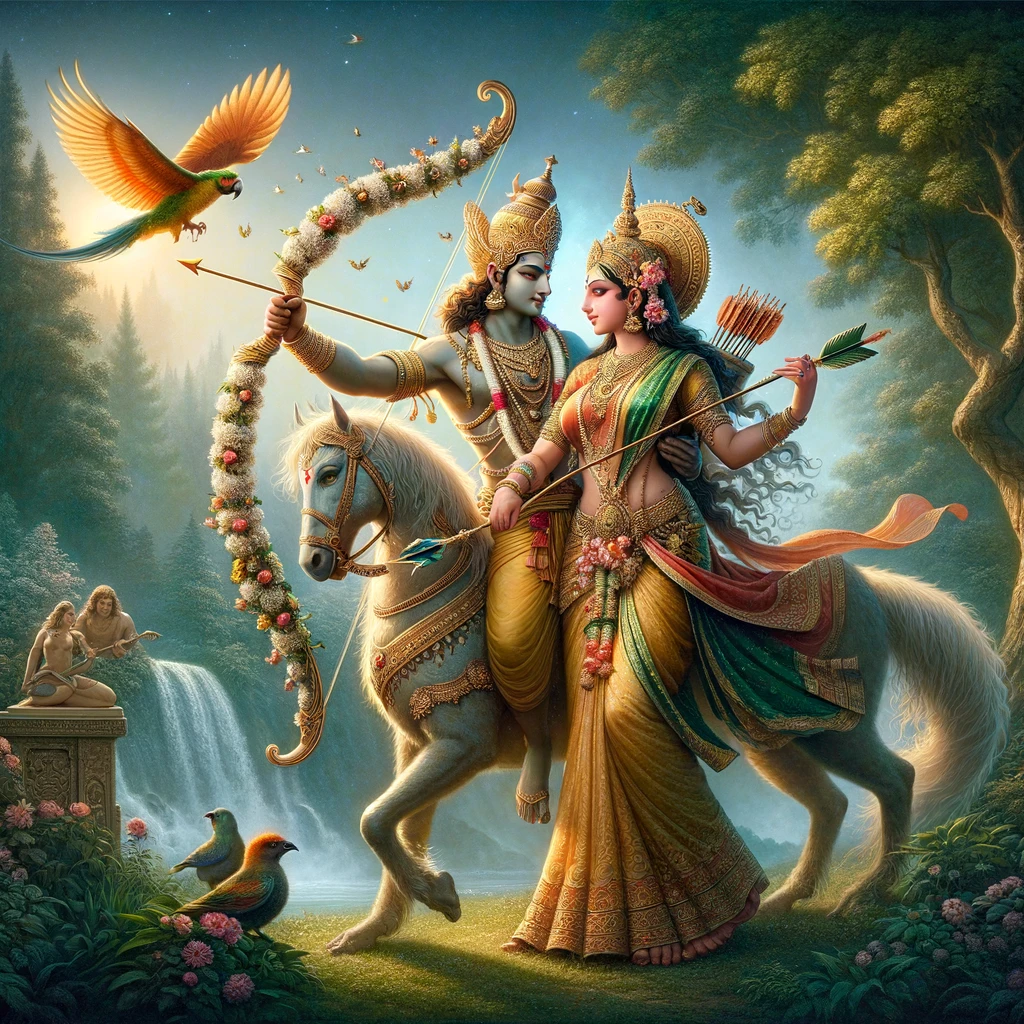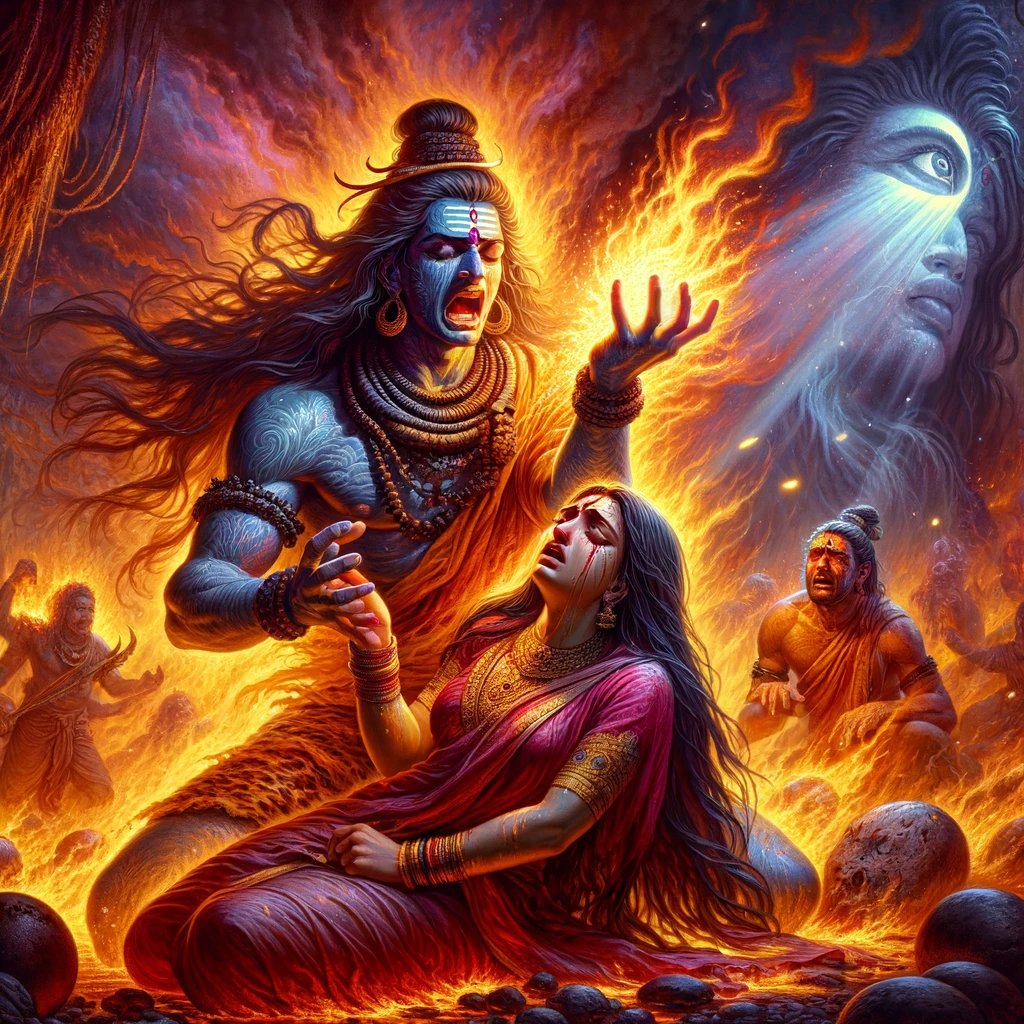The story of Kama and Rati, the Hindu gods of lust and love, embodies the divine couple of Indian mythology celebrated through centuries in literature, art, and culture. This tale, while deeply rooted in the cosmic play of gods, also mirrors the human experience of love, longing, and the eventual triumph over adversity. Kamadeva and Rati’s Love story involves. The relationship between “Shiva and Parvati” Love story. Kamadev was born to spread love in the world. Rati was the wife of Kamadeva and was there to aware people of love, desire, mating and pleasure! But their Love Story didn’t get completed in their first life! Yah. they reborn to complete their eternal love.

Once upon a time, in the celestial realms where myths breathe life, there existed a tale so enthralling that it spanned the cosmos. This is the story of Kama and Rati, the embodiment of love and desire, whose love story is woven into the fabric of the universe.
Kama, also known as Kamadeva, was no ordinary deity. Born from the mind of Lord Brahma, the creator, he was destined to kindle the flames of passion in the hearts of gods and mortals alike. With his bow made of sugarcane and arrows adorned with fragrant flowers, he roamed the heavens and the earth, a celestial cupid. His consort, Rati was one of the daughters of King Daksh Prajapati. He made Rati with his sweat! As instructed by Lord Brahma. was the epitome of beauty and desire, her grace and charm unmatched across the three worlds.

Their tale takes a dramatic turn with the task of awakening Lord Shiva from his deep meditation. The world was tormented by a demon, Tadakasur, who could only be vanquished by Shiva’s offspring. Thus, upon Brahma’s behest, Kama was to use his love arrow on Shiva, to bring him out of his meditative trance and ensure his union with Mata Parvati, the reincarnation of his beloved Sati. Approaching the meditating Shiva, Kama took aim and released his arrow of desire. The moment it struck, Shiva’s meditation broke, but so did his temper. In a fiery rage, Shiva opened his third eye and reduced Kama to ashes, leaving Rati in a sea of grief. Her tears and pleas eventually softened Shiva’s heart, who graciously restored Kama to life, not in physical form but as a spiritual entity, representing the true essence of love beyond the physical realm, thus earning him the title “Ananga.”
But destiny had yet another chapter for this divine couple. To complete their love saga, they reincarnated on Earth. Kama was reborn as Pradyumna, son to Krishna and Rukmini, and was kidnapped by the demon Sambara. Raised by Sambara’s wife, Mayadevi, who was Rati reborn, Pradyumna grew under her care, oblivious to their divine past.
As time wove its threads, Pradyumna discovered his true identity and the astonishing fact that Mayadevi was none other than Rati, his eternal love. With this knowledge, they transcended their mortal roles, recognized their immortal love for each other, and were reunited in marriage, thus completing their story of eternal love.

And so, the story of Kama and Rati, from their celestial beginnings to their earthly reunion, is a testament to the power of love. Their journey, marked by trials and reunions, celebrates love’s ability to transcend the boundaries of life, death, and rebirth, forever etching their names in the annals of mythology and the hearts of those who believe in the power of eternal love.
The literary works from the Ritikal period, such as the Kama Sutra of Vatsyayana, Rati Rahasya of Kokkoka, and Ananga Ranga of Kalyanamalla, delve deep into the intricacies of love and sexual relationships, drawing inspiration from the divine love story of Kama and Rati. These texts not only explore the physical dimensions of love but also its emotional and spiritual aspects, offering insights into the nature of desire and the ways to fulfill it within the framework of Dharma (moral law).
Furthermore, the poetic works like Rati Manjari of Jayadeva and Ratiratnapradipika of Praudha-Devaraja glorify the union of Kama and Rati, celebrating their love as an eternal source of inspiration for lovers across ages. The Manmatha Samhita, though anonymous, is another testament to the enduring legacy of Kama and Rati, exploring the subtleties of love and passion through mythological narratives.

The story of Kama and Rati, set against the backdrop of India’s rich philosophical, cultural, and literary heritage, illustrates the integral role of love and desire in the human experience. Kama’s arrows, made of sugarcane and bees, tipped with aromatic flowers, and his journey on a parrot, symbolize the pervasive and sweet nature of love that transcends all barriers, completing the circle of their eternal love story.

